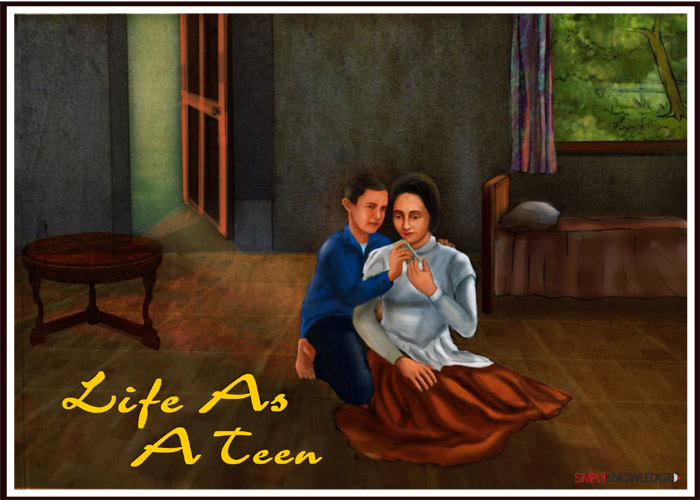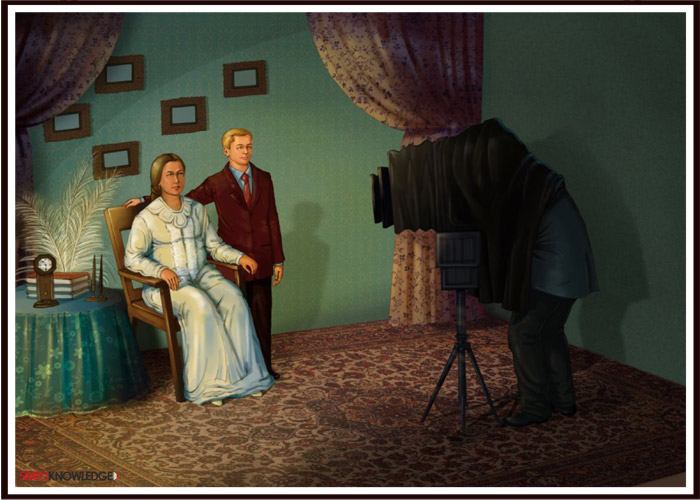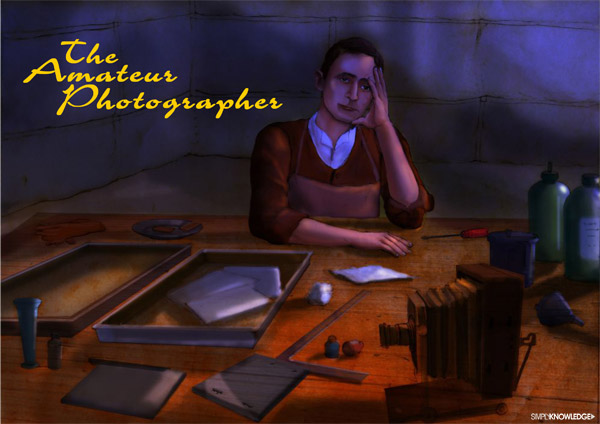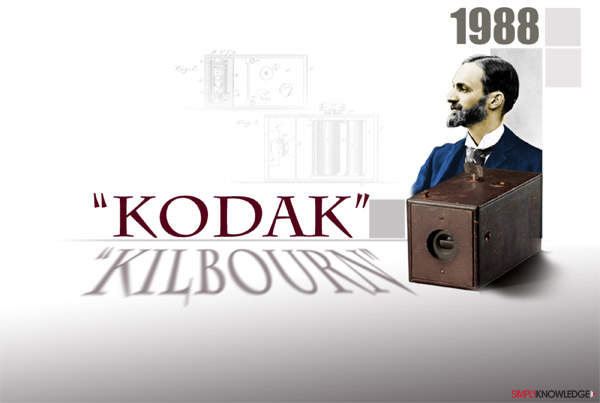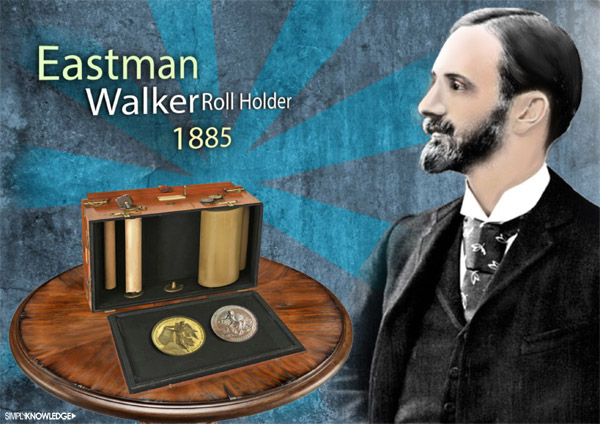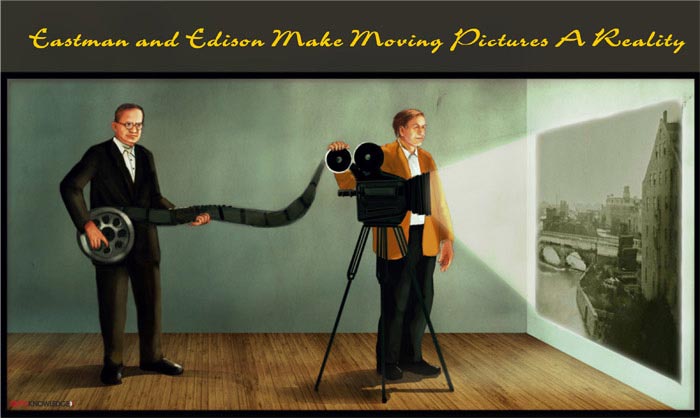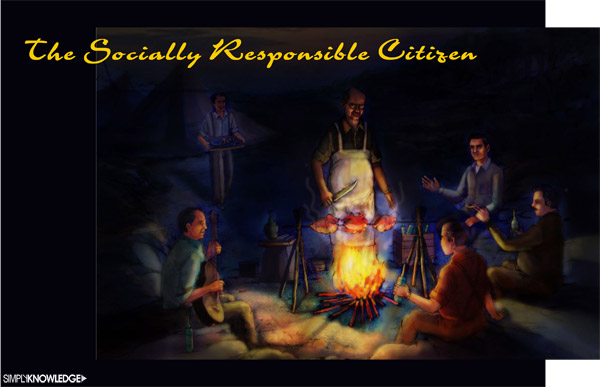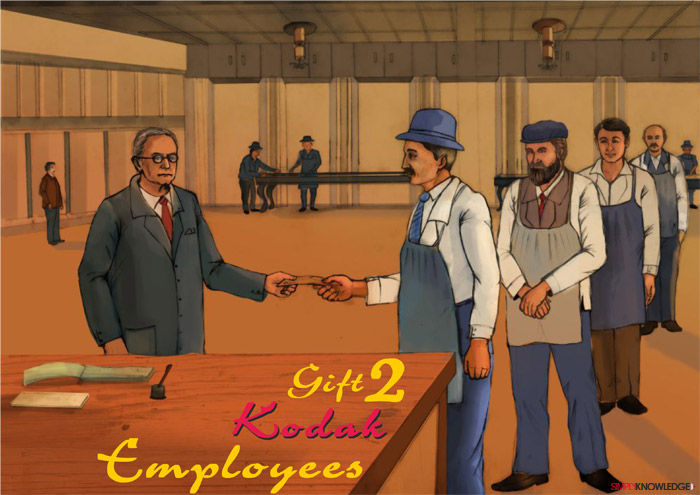


Introduction
Light makes photography. Embrace light. Admire it. Love it. But above all, know light. Know it for all you are worth, and you will know the key to photography.
- George Eastman
We live in a world where high end technology plays an indispensible role in our lives. Complex electronic devices and gadgets have simplified our lives by performing useful functions. For example, mobile phones, laptops, I-pads and television sets, appeal to us for their user-friendly features as personal objects, which are an extension of our personalities. What is common among all these gadgets is the sheer brilliance of light and color on their screens, appearing in the form of still or motion pictures.
A picture is worth a thousand words. How else would you have shared bountiful of happiness among your friends, with that photograph of your baby’s cute expression, on a mobile phone screen? Don’t you feel delighted to share your family picture, or the video of your holiday with your dear ones? Moreover, after being soaked in the technology of photography for years, can we ever imagine a world without photographs, and no means of capturing colorful memoirs? No we cannot, thus the use of a camera and its advanced technology has made people ‘click’ savvy.
Yes, it’s a camera, the means of capturing more than just colorful memories that has made all this magically possible, and even changed our outlook towards the world. Our life would be less enlightened or colourful without this brilliant technology of photography. Indeed, we would feel incomplete and less appreciated without the treasured gifts given to us by photography.
A century and half back, photography was known to be the domain of professionals only due to its time-consuming, cumbersome, expensive and complex wet-plate technique. The camera itself was heavy like a microwave oven. Naturally, the common man stayed far away from this field. In the year 1888, George Eastman, an American inventor, industrialist and a dedicated entrepreneur, who was determined to make photography an easy task, invented his simple and easy-to-operate roll-film camera. He also developed the process to quickly develop the film and provide pictures to the amateur photographer. With this straightforward hand-held camera, Eastman had introduced his most significant contribution to the ordinary man - the ‘Kodak’.
Years of dedication towards his ambitious ideas saw him realize his extraordinary vision fruitfully, where he wanted to make all of us photographers. However, victory and success did not come very easily to him. Building his empire required a lot of his sacrifice, perseverance and efforts. Eastman’s experimental, hardworking and never give-up attitude, combined with a compelling and shrewd personality, gave him the drive to successfully achieve his goals. A lot of his personality, attitudes, thoughts and actions were shaped by his early life encounters and upbringing that you will now learn.

Born Into A Humble Household
George Eastman was born on 12th July, 1854 at his family farm in Marshall, Waterville village, New York to George Washington Eastman and Maria Kilbourn. His ancestors, the early Eastmans and the Kilbourns, lived in America since the 1630’s in central New York, and spent their humble lives on agricultural activities at their family farms. But his practical father George W. moved away from farming at an early age, and taught penmanship for almost a decade before embarking into the world of business education.
While America was going through the phase of rapid industrial growth since the early 19th century, Rochester town in New York, whose basic economy was ascribed to the flour mills along the Genesee River, became one of the first ‘bloom towns’ to face urbanization. This ‘flour city’ soon began providing a variety of livelihood opportunities to Rochester town folks in the 1840s. Desirous of creating a new life, the ambitious George W. too founded a small business college here in 1842, and named it Eastman Commercial College. He was the President of this college, and sincerely committed to education. He also wrote books such as “Fulton and Eastman's Bookkeeping, Single and Double Entry”, and the “Complete System of Penmanship”. Then, two years after he turned 29, George W. wed 23 year old Maria Kilbourn, and spent the first few years of his married life in Rochester town, teaching.
Financial constraints however forced George W. to move back to a countryside life at Waterville in 1849 with his family, where he bought a 10 acre farm with a barn, and slowly adjoined another 20 acres to begin a nursery business. This is where George Eastman spent his happy boyhood days. The senior Eastman earned modestly from the 30 acre nursery venture and his business school at Rochester, where he taught students bookkeeping for diverse organizations like banking, insurance, merchandising, jobbing etc. Initially, George W. would stay during the week at Rochester and travel back home 130 miles east, to Waterville on weekends and holidays to manage his nursery. However, with time his visits became irregular, and his stay at Rochester town began to get extended due to school commitments. So, little George began seeing his father just occasionally, and lived a conventional rural and easy going life, mostly under his mother’s care. His blissful childhood days were also filled with visits to the Tompkins cousins in Marcellus, Eastman cousins at Ashtabula County, and Ohio and Kilbourn cousins on nearby farms during Christmas.
Living in the rural community at an impressionable age gave little George the restless ability to tinker around, that probably developed his imaginative capabilities, a talent that proved valuable to him in his future endeavours.

A Prenatal Bond Blooms
Tragedy then struck little George and his family. His father’s health slowly deteriorated due to inflammatory rheumatism since 1857. So after three years, the senior Eastman sold the nursery at Waterville and moved back to Rochester with his family. They lived in a rented accommodation, close to the college. However, George W. soon died in 1862 due to a brain disorder, and was buried in his family farm in Waterville. The eight year old boy and his family fortunes soon changed. No one knew where George W Eastman’s money went and Maria, widowed at the age of 41, had little resources to make ends meet. She earned little from the college profits and royalty from textbooks, though it was not enough. The family of four, that also included little George’s two elder sisters, Katie and Ellen Maria (Ella), was then living an unpretentious life in 10 Livingston Park. It was a fashionable area from where Maria took in boarders out of compulsion. This impinged on young George’s mind right in his childhood days, though he bonded with his mother deeply under these circumstances. All the way into his adulthood, George Eastman held a grudge against his father for the debts he had to incur, and he would always express his displeasure if Washington was put in as his middle name.
At Rochester, Maria looked after her family enduring trying times. Despite a rural upbringing, she had received a full education at the Vernon Academy and Kellogg’s Seminary, rare for a girl in the 1830’s. Therefore, education had made her self-reliant and strong enough to deal with situations. By living a basic life within frugal needs and a penny-pinching outlook, Maria was able to send her son to school. Courageously, she kept her head held high in her community and gave George the parental guidance that he needed to face the urban world. Young George’s love, respect and affection for his mother was unconditional, and he disliked that his mother had to cook and clean for boarders as his father had not left them any assets. He too became self-reliant at an early age, but depended emotionally on his mother for directions and moral support. For young George Eastman, his mother Maria, was the pillar of strength behind all his success, and was his closest companion.

Boyhood Activities and Budding Creativity
Young George was educated in the best private school for boys - Mr. Carpenter's school. He was average in studies, but a good baseball player. As a child George was shy, but always courteous and polite. In his schooldays, he was once a victim of nastiness and malice. Some school boys had invited him to a mock initiation ceremony, by promising to make him a member of their secret club. Hidden in the barn loft, these boys dripped molten candle wax on his stretched arms. However, young George stood firm and never even raised a whine. The boys admired his willpower and fearless attitude, which raised George’s reputation. As an adult, George would proudly display these scars that he carried for life.
Cowboy, mystery, thriller and adventure stories had a profound impression on George Eastman's boyhood life. He enjoyed reading story books under the series Optic Adventures, sourced from the Scrantom’s lending library. With titles like ‘Work and Win’, ‘A Millionaire at Sixteen’, ‘Poor and Proud’, ‘The Adventures of a Smart boy’, ‘Try Again’, etc., George was frequently transported into a world of fiction, travel, science etc., which fuelled his imagination besides enlightening him.
Furthermore, since an early age of 14, George Eastman’s creative grey cells helped him fiddle around with odd stuffs and make things with his hands. Gifted with an inventive mind, he used knitting needles to make wire puzzles and even managed to sell them to his friends for 10 cents a piece. He would give these dimes to his mother. He then made walnut bookshelf brackets into ‘filigree design’ and sold them for $5. With his first $5, he opened his first bank account. Young George also received a toolkit and a workbench, a present from his mother to pursue his hobby in his spare time. Painting was yet another one of his favourite Sunday past-times. But above all his activities, this intense blue-eyed boy was bound deeply to his close knit family. Being an emotional and a caring family boy, he was always concerned about his sister Katie’s fragile health. Katie was elder to him by four years and was always on a wheelchair. She was rendered invalid due to polio at a very early age, so George always took special care of Katie.
Young George dropped out of school in 1868, out of sheer independent resolve and not out of compulsion. He admired his mother’s courage and wanted to make her life comfortable by getting her out of the shabby state of family affairs. So he decided to work and help his mother meet expenses, though Maria, who till now was providing for the family never approved of it. But George had already taken his vow to ease the family’s present monetary conditions. By now, the family had made an economic move to a cheap and modest accommodation at 9 Elizabeth Street, Rochester, where Maria still took in boarders, but after careful selection. The Andrus family entered their lives that year as boarders. Pretty soon, George’s eldest sister Ella married George Worthington Andrus and moved to Cleveland. She later gave birth to a baby girl Ellen Andrus Dryden.
Life As A Teen
Though a school drop-out, young George was an extremely intelligent and self-motivated boy. He was short and slim, but had a steely determination. Always specific and clear about his needs, he unfailingly took the initiative to educate himself throughout his life. He frequently visited bookstores to read the encyclopedia and never dithered in acquiring skills that he felt was necessary to him, for his independence. He started work by running small errands and then joined as a messenger boy in an insurance company for $3 a week in 1868. Then the following year, he sold insurance policies that gave him $6 a week. As his earnings increased, he took on the role of family head and dutifully contributed in his own little way to the family income. He could now afford gifts for his family. He shared his Christmas presents and treated Katie to carriage rides. By planning well ahead, George resourced money very easily to fulfill his several needs.
A lot about George’s early life is reflected in his annual account books that he meticulously kept since 1868. It reveals his talents for saving as well as spending. Undoubtedly, George was influenced by his father’s activity in accounting and bookkeeping. He felt extremely relaxed in the world of finance, business and numbers. He chased his father's favourite proverb, “No one should trust transactions of a pecuniary nature to his memory alone”. So George’s accurate bookkeeping show complete records of his daily income and expenses, which also notes his early philanthropic contributions that began while he earned a salary of only six dollars a week. Unquestionably, his invalid sister Katie, who was a recipient of his early philanthropy, had inspired George to donate for noble causes, an act that continued to grow to unfathomable extents later in his life. From his account books, George’s first meet with photography also surfaced when he was 14. Along with his mother, he once attended a photography lecture in 1868. Later, two photographs of him were taken, one given to his mother, and the other was for his Sunday school teacher from St. Luke's Sunday school, where he learnt the passages from the scriptures by heart.
George Eastman encountered a second childhood tragedy after he turned 16, when Katie died on 3rd December, 1870. With his little earning, he took care of Katie’s funeral expenses and her last ride to their family farm in Waterville, where she was buried besides her father. In the same year, a house fire destroyed the house of their neighbour Henry Alvah Strong. Maria invited his family as boarders, with the added prospects of an extra income. Strong, who was elder to George by 16 years, was known for his gambling interests and enormous risk-taking abilities. He was friendly, jovial, sociable and pleasant in his relations with people. A deep friendship then began between George and Henry Strong.

Ideological Grooming Of A Self-Made Man
A self-made man, George Eastman was always willing to experiment and learn from his experiences. So by early 1871, George was working for another insurance firm, Buell and Hayden who reimbursed him a good sum of $41.66 a month. Then on 8th October, 1871, around four square miles of Chicago were ruined in a huge 2-day blaze that destroyed above 17000 wooden buildings. Over 300 people were killed and over 100,000 were left homeless. George then brought in plenty of new business due to this great Chicago fire of 1871 and won the admiration of his insurance firm. As a clerk for them, he wrote policies almost amounting to three quarter of a million, and as an occasional fireman, he earned another $8. His clever judgments helped him in scrupulously saving a lot of money. Furthermore, after returning home, this 17 year old teen learnt accounting at night to get a better salaried job.
As a young teenager, George also had a lot of time besides his work which he utilized fruitfully. Extremely mature for his age, he never neglected his appearance and dressed neatly in a suit. Living economically, he wore neatly mended boots, a hat, tie, and shoes that he bought himself. Wanting to be taken seriously, often he tried out remedies to appear older like an adult. He even took dancing lessons for $10 and began his lifelong dedication to physical fitness from Shadders Gymnasium for $5. He began believing in the adage ‘work hard and play hard’. So he focused his energies on living a fulfilled and quality life, whenever he could afford it, alternating between work and play. He took out time to attend to his recreational needs by travelling and exploring far flung places. He loved vacations as it gave him a space of his own. By the time he was 18 years old, he was already indulging in his travel exploits to New England for sailing and fishing in Squirrel Island, and had travelled far west to Chicago by 1873. Indeed, he loved his liberty and felt proud of the fact that he was earning, which made him feel important.

The Young ‘Man of the House’
George, now in his early 20's, soon joined Rochester Savings Bank as a junior clerk in April 1874 and received a handsome remuneration of $700 a year. He and his mother now led a respectable and balanced life, within modest means. He worked diligently and by early January 1875, he was promoted to second assistant book keeper, with a salary of $1000 annually. This marvelous salary helped him save for his later adventures in his future hobby – amateur photography. By 22 years of age, he could provide a better life style for himself and his mother.
Just like everyone around, George too always aspired to move up the social ladder and improve upon his social living conditions. So, in April 1876 he moved to 49 Jones Avenue, another modest rented accommodation in a beautiful location. This marked the beginning of his upscale mobility. He could now afford a cook as well as a part-time helper. Having enough money at his disposal, he purchased his first art reproduction to decorate his new place, though his mother always remained cautious and economical. His bank job also gave him surplus time and energy that he spent delighting himself by visiting museums, theatres, art galleries, music concerts, visiting cousins, etc. With his expanding social life, he also began dating many young women. Though George led a bachelor’s life till his end, there were speculations that he was romantically involved during this period with a lady, Miss Susan Brown, who had interest in music. He too was equally fond of music. However, Susan called off this liaison to pursue music education in Europe. Susan’s love missives to him and his most believable account book which show no entries during this period between 18th March, 1874 and April 1876 support this tale. But it was probably George’s response to overcome this loss, which became the reason and motivation behind his later life philanthropic contributions to University of Rochester’s Eastman’s School of Music.

The Banker Goes Click! Click!
Everyone around George might have assumed that he has settled down in his career as a banker, but destiny had other plans for him. His boyhood years of struggle within meager means, stimulated his interest in making more money. It became his fascination as he was not cozy being safe and sheltered. He now had strong urges to set up an individual enterprise just like his father. Around that time in 1877, American land speculators were eyeing Santo Domingo for its potential land bloom. George’s great risk taking appetite now played on in his mind. He too decided to begin land investments after observing that many of his bank's affluent patrons made a significant amount of their assets in real estate. He then thought of taking a holiday to Santo Domingo for the purpose, when a fellow bank worker proposed to him that he make a documented record of his trip before the potential land purchase. George now decided to buy photography equipment, and this event led to the turning point in his life, that drew his attention to photography.
Very soon, his priority changed. 23 year old George aborted his trip to Santo Domingo, and on 13th November, 1877, bought the camera and paraphernalia with the money that he had saved for his travel. He paid $49.58 in two installments for the complete photographic equipment, which during those days was extremely bulky. It involved a huge camera box that was around five by eight inches, a dark tent, a thick black cloth, a large plate holder, chemicals for developing, water container, heavy tripod and heavy glass plates. This wet-plate process of photography was extremely sloppy, cumbersome and time-consuming that made taking an out-of-studio picture very complex. As it demanded extreme patience, the ordinary man largely stayed away from photography. But George just couldn’t comprehend why taking a picture was extremely complicated and eagerly wanted to experiment with the huge volume of equipment involved in his new hobby. He then became seriously hooked on to the complex and laborious process of wet-plate photography, something which only professionals would understand.
Soon his dating business stopped, and his social life too got limited. George, who loved challenges, had found an interesting way of spending his spare time, by practicing wet-plate photography. He immediately hired and paid $5 to two amateur photographers George Monroe and George Selden, to learn how to use the wet-plate paraphernalia. He was their disciple. It appears that from Monroe’s studio, George as an amateur had taken one of his first photograph in 1877, using this technique. It is a photograph of the bridge across the Genesee River. After his fundamentals were clear and he had mastered professional wet-plate photography from his tutors, it wasn’t long before George knew that he had found his avenue where he would spend his remaining existence.
The Amateur Photographer
George often set out to click pictures by the riverside, carting his wet-plate photographic equipments on his back, which he described as ‘a pack-horse load’. Once it turned out to be an amusing event for his town folks. The baker, the grocer, the blacksmith, his friends and neighbours wanted to join in the fun and followed him. Alas! The outdoor picture development was progressing at a snail’s pace. The town folks got bored and headed back, leaving George to develop his wet-plate in his dark tent. The resulting photograph was out, but the necessity of carrying the bulky camera equipment and dark room to develop the outdoor picture on the field, had left him annoyed.
As his wet-plate photography progressed, George was slowly being weighted down by the bulky equipments. Once, the photographic chemicals for plate development, that he usually carried carefully, leaked and spilled onto his clothes during his journey, ruining them. This was uneventful for George, who was very economical in his living. Thoroughly disappointed with the wet-plate process, he then resolved to find an alternative technique of taking photographs. He now wanted to find a way to make the camera smaller, easy to use, and devise a simpler development process that would shorten the photography procedure.

Stepping Stone To Success
It bothered George that photography was difficult for an ordinary man like him. So he earnestly endeavoured to eliminate the need for bulky photographic equipments. The thought never even crossed his mind that having less knowledge about a topic could be a barrier. After all he was a school drop-out with little formal education and certainly not educated in high level Chemistry. But, he always took quick decisions boldly. Once he made up his mind and targeted an objective, he never gave up easily. He simply went ahead, learnt French and German and also subscribed to European scientific photography journals and manuals, to know about the work of British photographers in this area. He then read them voraciously and kept thinking about it.
From his first issue of The British Journal of Photography, George found an article which described improvements in making a dry-plate emulsion using gelatin, then considered inferior to a wet-plate emulsion. He read the article written by a British photographer, Charles Bennett with interest. At that time, England was known to be far ahead of America in photographic developments. The article said that plates coated with gelatin emulsions were dried to be exposed at leisure, as the plates remained sensitive even after drying. George interpreted its meaning as carrying less equipment for outdoor photography, as the plate could be developed later. He even realized that a dry-plate would give faster results than a wet-plate. His farsighted view on the merits of a dry-plate technique, then led him to begin his own experiments at home for dry-plate emulsion. He also regularly exchanged correspondence with amateurs and professional photographers to obtain photographic emulsion formulas and techniques. His methodical approach followed the process of elimination by trial and error, which helped him take his decisions and arrive at conclusions.

George – ‘The Emulsion Maker’
George spent his savings generously on camera equipment supplies. So he worked hard to find the perfect emulsion coating for dry-plate photography. After he returned home from the bank his night long experiments would begin in his mother’s kitchen, hovering near the kitchen sink with his own emulsion formulas, taking catnaps in between. His mother would say that George was too tired to undress, and was often found asleep besides the kitchen stove on a blanket kept on the floor. By 1879, when he was 25, George had developed a very high quality dry emulsion coating, a light sensitive chemical mixture that captured images. Soon he started making gelatin dry-plates for his own use. He also devised a coating machine to apply this emulsion uniformly on the glass plates. It was simple in design, but functional, that helped coat plates in large quantities. Clearly, this would reduce the cost of a dry-plate. George was now ready to commercially venture into the area of photographic business that he had in his mind for some time.
In the industrial era, Europe took the lead among the First World countries and dominated the commercial world markets in sectors such as research, manufacturing and enterprise. London was regarded as the world’s financial capital, and incidentally, the world’s photographic capital as well. In America, George was the first to experiment with dry-plate photography techniques which involved coating glass plates with gelatin and silver bromide. So, he took a smart business move and first got the coating machine patented in England in the year 1879, and the following year in America.

The Hobby Becomes A Business
By 1880, 26-year old George had a prosperous bank career, and had graduated to the post of first assistant book keeper, drawing a salary of $1400 a year. His emulsion formula by now had all the photographic qualities. So he proceeded by first selling his British patent of the coating machine and then began commercial production of dry-plates. Soon, George’s hobby became his business. Then in April 1880, George leased space above a music store and slowly occupied its third floor loft on 343 State Street in Rochester, a little away from his bank. He converted it into a neat and tidy factory, efficiently using space to manufacture and sell his dry photographic plates. He rode to the bank every morning on his English bicycle, carrying his lunch in a shoebox. After 3 in the afternoon, when his bank job was over, he rode to his factory to conduct his experiments. His factory was his personal space where he could unleash his creativity. At night between his emulsion stirrings, he would take powernaps on his hammock that he had himself designed.
George soon employed his cousin Eliza Tompkins as the laboratory’s head, which had six employees to coat the glass plates. Scovill Manufacturing Company, who was already in the business of manufacturing cameras, was then hired to customize light weight plate cameras suited to George’s requirements. Inside these cameras, the ‘emulsion maker’ then fitted his emulsion coated dry glass plates after cutting them into smaller pieces. Very soon his dry-plate business began flourishing and by the end of 1880, he had profits of around $4000.
On 1st January, 1881, the dry-plate business began operation with a new name, Eastman Dry Plate Company, after the Henry Strong invested $1000 and formed a business partnership with George. Henry provided financial backing and pumped capital into the company whenever required. People trusted Henry, who made them feel comfortable with his cheerfulness and enthusiasm. Strong had incalculable faith in George. He became the public image of the company operations, taking on the post of the President. Throughout his role as a President, Henry helped the office environment develop into a healthy one, as well as enhanced the company’s image. George became the Treasurer of his company, as he wanted to firmly manage and control money. Fortunately under his control, the factory soon expanded in three months.
George’s ethics strongly rejected favouritism. So when a promotional level bank post was filled by a bank director’s relative by sidelining the more competent George, he hastily chose to quit on 5th September, 1881, after voicing his opinions as ‘an unfair act’. The 27 year old man now drew $1500 a year, his last bank salary. But financially, he had much savings and now he devoted himself to his thriving photography business. To meet growing business needs, George purchased property to set up a manufacturing plant with modern equipments. However, dark days were soon around him. The coating machine never worked properly and broke down very often. So the employees favoured hand-coating of glass plates. At one juncture in 1882, the company was on the verge of a collapse due to the defective shipment of gelatin plates. Those plates left unused also lost their sensitivity. George’s reputation was at stake. However, the original thinker and businessman survived the storm by isolating himself and continuously working hard. He received recreation from pulp fictions and experimented in photographic emulsions. He even traded his plate manufacturing process with a British firm’s emulsion expertise. Soon he emerged victorious and came out with improved solutions.

A Mammoth Leap For Photography
Since 1881, George was already engaged with experiments trying to eliminate the heavy glass plates and develop a lighter, unbreakable and flexible film material that could be rolled. At this point, George’s approach towards photography began evolving further. But he clearly expressed his vision about the photography process, “to make the camera as convenient as the pencil.” Certainly, George wanted photography to be a normal and enjoyable routine. He then hired William Hall Walker, known for making an amateur camera called ‘Walker's Pocket Camera’ with interchangeable parts, a goal George was chasing himself. In those days, many others like Walker were manufacturing cameras as beautiful objects, and not for the masses. Walker joined George on 1st January, 1884. Though George acknowledged Walker’s abilities and knowledge in the area of camera parts, he shared a fairly difficult relationship with Walker. Walker went on to become the manager of George’s London agency in 1885, when George expanded his operations to Europe.
While George the ‘emulsion maker’ experimented in search of a suitable emulsion for film, he also joined Walker to successfully devise a roll holder, a device that holds and advances the camera film. Next, George devised the first emulsion coated paper film, layered with a mixture of gelatin and photographic emulsion. This thin, transparent roll-film negative called George American Film, was rolled and stretched on spools that were fitted on the lightweight roll holder. This rested inside the camera and was the first film in the history of photography. It led to the beginning of a photographic process where a series of pictures could be taken on strips of emulsion coated film. Paper was just used to support the photographic gelatin emulsion and then stripped off. Along with the roll holder (patented on 5th May, 1885), the Eastman American Film (patent applied in March 1884) was the legendary roll-film used in George Eastman’s first camera named ‘Kodak’ in 1888.
The roll holder invention having 17 interchangeable parts was standardized as an accessory in a camera. Undoubtedly, this was a mammoth leap for photography. It also won many awards, notably gold medals at the International Inventions Exhibitions of London and Exposition Universelle in Paris. The roll holder and the new Eastman American Film were now feasible for mass production. Then in 1884, the Eastman Dry Plate Company was recapitalized and reincorporated into a $200,000 corporation - the Eastman Dry Plate and Film Company.

Changing Approach Towards Photography
George now tried his marketing techniques to market this new emulsion coated paper film. Though field photographers were quick to adapt from glass plates to this film, professional studio photographers refused to adapt to this new film technology. Hence this first roll-film had limited success. Moreover, emulsion coated paper film was still unsatisfactory as the developed pictures showed the paper grains. In contrast, even enlarged pictures developed from glass negatives were crisp and sharp. Despite the flaws of this coated paper, George confidently promoted it along with the roll holder as an advanced technology, compared to the glass plates.
He then thought that since the studio photographers were not interested in changing to film, he would have to evade them. He now pursued his changed approach to photography, where he asserted that his new film would not be limited to professionals alone, but should be accessible to amateurs too. To him, amateurs were those who only wanted to capture a moment of their lives and treasure them in their memory. They were least interested in processing, developing and printing their results, and were the vast number of ordinary public who had never taken a photograph before. It struck him that he had to reach out to these very amateurs by first creating his own market. But for that, he had to find a way to coax the general public to take to film photography. All that he needed was a simple-to-operate, light camera along with a flexible, inert and transparent film, so his search continued.
The spring of 1885 saw George make yet another upscale move to 59 Ambrose Street, a big but modest 10-room Victorian cottage, closer to Jones Avenue. This closed Maria’s boarding house for good. She always had company from the Strong family, her relatives and other community members. Moreover, George’s niece Ellen Andrus was frequently living with them after her mother Ella’s death in the previous year. George’s business now consumed most of his hours, and his societal life became obligatory, though he occasionally went on fishing trips, attended clubs in Rochester and brought home guests. Bicycling was another fad that caught on George in the 1880s that ran parallel to his work. Undoubtedly, his travel therapy time and again fulfilled his spiritual needs, that helped him bounce back with optimism and energy to his hectic work life.

A Pioneer American Industrialist
Soon, George’s company started manufacturing the roll holder for the Eastman American film, which was fitted to the first roll-holder camera manufactured by Scovill Manufacturing Company. In the meanwhile, he thought of new methods to continue his photography business that would sustain the company and bring in profits. He was already in the process of learning about patents since 1882, when he received an approved patent for photographic paper pads. He then began diversifying in manufacturing more photographic materials. An opportunist with an eagle-eye, he rarely missed any occasion as they emerged. When George saw that demand for gelatin emulsion paper was on the rise, he too jumped into the potentially huge paper business in 1885. This was a smart move as coated bromide paper (DOP), along with the printing-out paper (POP) ‘Solio’, proved to be the company’s stable bread and butter in the long run. Besides, on the same machinery for emulsion coated film, it could be easily produced. To promote the bromide paper, he next ventured into picture printing and enlarging services, a fairly successful operation that lasted beyond 100 years. George was the first in the market (till 1887), and the only American producer with an enlarging service.
As a 32 year old in 1886, George Eastman the astute businessman, displayed tremendous wisdom and foresight in running his company. He knew he had to be a leader in the huge competition that had built up in the field of photographic materials in the 1880s. So he adopted the traditional route, where he invested the company profits constantly on product improvements, innovation and expansion, leaving some profits for generating good dividends. He also hired salesmen and demonstrators to sell his paper, roll-holder and Eastman American Film. These men had to first clear a handwriting test and were thoroughly trained by George before being sent to the field. But the ever cautious George was also known to engage detectives to report back their moves.
During this period in 1886, George’s weekly salary was less than $60. But his public image was one that produced the best emulsion, and only he knew it better. Emulsion making was the most difficult task, which could click or miss on each attempt. Indeed, emulsion making was an art. Faced by swelling competition, George felt the need to hire a theoretically qualified and knowledgeable technician. Henry Reichenbach, a chemist from the University of Rochester was the first scientifically trained man hired by George for his expertise. Four years later, he recruited another brilliant engineer from Massachusetts Institute of Technology (M.I.T.), Darragh de Lancey. This signaled the entry of scientists and trained technicians in industry, while single inventors were fading out. Reichenbach began assisting by experimenting with emulsions, while George kept a firm eye on his increasing business operation such as advertising his products in newspapers and periodicals. Nevertheless, George was the first American industrialist to seek the fulltime services of scientists, and launch his research department on a separately allocated company budget.
By December 1888, Reichenbach had successfully produced a perfect transparent roll-film, which was a flexible and inert photographic film, made out of nitrocellulose solution in wood alcohol. However, disputes in patent rights caught George in litigation as Hannibal Goodwin of Newark, New Jersey had already manufactured nitrocellulose flexible film in 1884, and had applied for patent on 2nd May, 1887. Reichenbach and George’s patent was filed much later in April 1889, and granted on 10th December 1889. Nitrocellulose film was commercially introduced by George in August 1889. 25 year later, the federal court favoured Hannibal Goodwin and George had to pay $5 million to Goodwin’s heirs, undeniably the biggest downfall of George’s life.
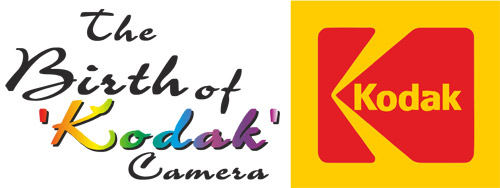
The Birth of ‘Kodak’ Camera
George wanted to sell his transparent nitrocellulose film successfully in the market. For this, his concept was to manufacture the complete apparatus supporting film photography. Indeed, his goal was to create a market for his film, by delivering a complete system of photography. He just needed a cheap and straightforward box camera, which complemented his film and sold it too. Slowly, he was buying patents and consolidating businesses that helped him reduce competitors. So when George’s company started designing and making cameras along with roll holders through Brownell Manufacturing Company (later known as ‘Camera Works’) in October 1887, George was directly competing with Scovill and Adams Company, (his first roll-holder camera maker, earlier known as Scovill Manufacturing Company) along with many other camera manufacturers. Camera Works manufactured nearly all models of George’s cameras from the first ‘Kodak’ under Frank Brownell, George’s camera craftsmen from Rochester. Frank Brownell designed the cabinets for the camera, did the wood work, as well as assembled the parts. Bausch and Lomb, another Rochester concern, supplied the fixed focus optical lenses. Very soon, George Eastman’s baby, the world famous ‘Kodak’ camera was born.
In 1888, 34 year old George Eastman launched his first handheld box camera called ‘Kodak’, that was simple to operate, light-weight and easy to use. George called it the ‘little roll holder breast camera’. Company President Henry Strong was the first to take a Kodak camera on a vacation in May 1888, and get smitten by it. This legendary roll-film camera was factory loaded with a 100-exposure thin roll of Eastman American film and sold for $25, a steep price in those days. After taking the pictures, the camera was send to Kodak’s Rochester factory, which took care of the processing and development of the film. The photographer then received his prints along with a reloaded camera, all for $10. Early Kodak pictures that emerged were round. A Kodak was easy to carry and it had no problems in focusing or lighting. This much simplified contraption soon gave amateur photographers the pleasures of enjoying photography all over America.
By the end of 1888, over 5000 cameras were sold, and company profits amounted to $269,059. Almost 6000 photographs were developed in a day. At last, a complete system of photography had arrived in the market. Kodak cameras went on to win many awards at conventions. The days of cumbersome, complicated photography process and the use of heavy glass plates involving bulky equipments were numbered. George had aptly coined his first popular slogan to explain his business, “You press the button, we do the rest”, as all that the photographer had to do was hold the camera near his chest, point the camera at the subject and click.

The Legend Behind ‘KODAK’
George Eastman invented the catch word ‘Kodak’ and registered this as the trademark brand name on 4th September, 1888. The meaningless word was invented by him out of thin air while playing his favourite game, ‘Anagrams’. He tried out several combinations of letters that began and ended with the letter ‘K’ to form ‘Kodak’. But he was clear on his search parameters for a brand name. In his words he explained to the British Patent officer about this new American word, “the word must be ‘short’, incapable of being ‘mispronounced’, and must not resemble or associate with anything in the art except the Kodak.” ‘K’ was his favorite letter attributed to his mother’s maiden name Kilbourn. To him, ‘K’ was a ‘strong and incisive’ letter. This word ‘Kodak’ became synonymous with a camera before the 19th century closed. The name Kodak with its yellow and red trademark colours soon became the symbol of progress, of an aspiring and progressive nation.
Amateur photography by now became largely successful due to the lightweight roll holder designed by George and William Walker along with the transparent Eastman American Film. But George was prophetic to see that the transparent flexible nitrocellulose film, that slowly replaced the Eastman American Film, would help sell the new photography system that ‘Kodak’ represented. In fact, he would prove right that the demand for film would eliminate the need for glass plates, once amateurs were attracted to photography. George then reorganized and reincorporated his ‘Eastman Dry Plate and Film Company’ to ‘The Eastman Company’ in November 1889.
Through constant improvisation, a series of improved and more affordable Kodak cameras entered the market in the following years that took rectangular pictures. They were Kodak No.1, a folding Kodak in 1889, a pocket Kodak in 1895 for $5, the Brownie camera in 1900 for $1, non-curling film in 1903, etc. George loved the folding Kodak, but his all time favourite remained one that was cheap, small and the latest in the market. George’s company also started manufacturing and marketing special cine film for motion picture use from 1896. After few more cine film launches, the 16 mm color film (Kodachrome) for amateur cinematography was launched in 1935, as the most perfected colour film.
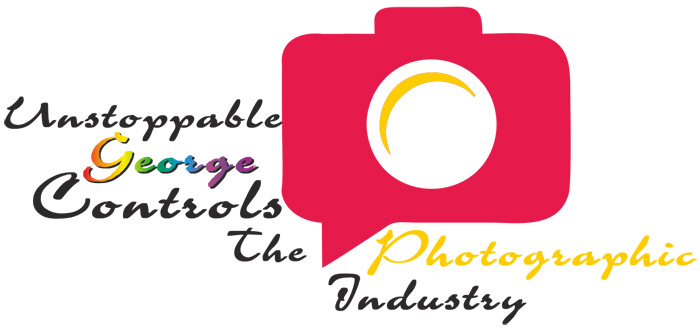
Unstoppable George Controls The Photographic Industry
At the age of 34, George’s dream of simplifying the photography process and bringing it to the ordinary man had been fulfilled. He now wanted to live his life in the best manner that his money could afford. So then in 1890, 36 year old George, who was earning a salary of $7500 annually, moved to his next 15-room posh rental accommodation at 13 Arnold Park. Initially, the move to the high-class neighbourhood met with stiff resistance from his 69 year old mother, who was living a humble life in her familiar middle-class locality, but later she adjusted. George even encouraged Maria to begin living lavishly, without any fear of poverty, but to no avail. She could not leave her economical habits, and he had to forcibly take her shopping against her will. Her restrained ideas were reared in her bone, as she went through very misfortunate times earlier as a widow. But George displayed his urbane tastes by furnishing his new house with a 3 room suit –bedroom, bathroom and dressing room for himself. He also installed original paintings, set up a pool table and a miniature firing range at his basement, where he often spent his Sunday afternoons with Henry Strong and other guests.
Around that time, the now unstoppable George Eastman also established a parallel company in London called ‘The Eastman Photographic Materials Company Ltd.’, which had on board five British directors. This company promoted business to the rest of the world. George’s European friend and scientific advisor, Joseph Thacher Clarke guided him on expanding operations, foreign dealings such as property, technical experts, acquisitions, foreign patents and recruitments. George also set up the first British plant in Harrow in October 1891. In Rochester, Frank Brownell’s ‘Camera Works’ and in England, George Davidson, were George’s camera makers. In 1892, the Rochester Company was again reorganized and reincorporated as ‘The Eastman Kodak Company’ in which, George Eastman played the roles of a treasurer, general manager, and finally the board chairman.
All through this last decade of the 19th century, George wanted to bring order to the photographic material industry; hence he always displayed a strong propensity to remain in control. He hired William Stuber, a well-known photographer in 1893 for handling the tough task of making transparent emulsion film, after Henry Reichenbach was laid off his duties. George had found out that Reichenbach had betrayed him. The following year, Stuber showed results by producing a good quality emulsion. Under his leadership, the emulsion department marched ahead. Years later, Stuber went on to be the President after Henry Strong. Kodak then profited by $87,717 at the end of 1893, and by 1894, 40 year old George, then known by his initials as G.E., was ruling the world’s largest photography business. George’s company now received much acclaim for its stability, as he kept his company afloat even during the severe economic depression in America (1893).
Without a doubt, George’s unparallel energy, never-ending drive, astounding concentration power and capacity to work inspired everyone. Employees worked overtime faithfully, despite George’s hot temperament. Even women employees took good care of the work as their baby, and reverently followed George’s orders. However, George was often seen as ruthless and scheming, who took uncompromising steps to attain his industrial goals, like buying up small photographic firms to lessen competition. He was respected as well as feared. Always highlighting the need to bring the best quality photographic goods in the market at reasonable costs, his company would constantly research and develop innovative products to stay ahead of the competition. Rivals who called him ‘Julius Caesar’, envied him as they realized his capacity to organize all aspects of the photography business - paper, plates, roll holders, film and cameras. So despite increasing struggle, his company operations expanded under his watchful moves, while his competitors remained single product manufacturers.

The Final Decade Of The 19th Century
As his fortunes kept rising, George Eastman was further encouraged to fulfill his high-class aspirations by outward appearances. So then in 1894, he moved to a bigger and impressive house called Soule House at East Avenue, a posh locality. George was now much recognized among Rochester’s elite society. It even became fashionable to live nearer to him in East Avenue. Always motivated to do things for his mother, he would say, “All I ever wanted was to get enough money for her.” So Soule house in Rochester was his first house purchase. Mother Maria, now in her 70s too did not resist this move, and was living a much well-dressed life. Indeed she was delighted and proud of her son’s achievements. She looked after all his needs, charmed his colleagues, heard him out in his business matters and at times participated in his social endeavours. Yet she always lived within modest means by sheer habit, as she was comfortably accustomed within them.
George also continued exploring his love for life at the peak of his success, by interspersing his work with holiday activities. As a matter of fact, by now he had outlined his living pattern that included long vacations round the globe alternating with long hours of work. So then from 1895 to 1901, Henry Strong took central control at Rochester’s Kodak Park as George began his enjoyable life experiences, balancing his business with leisure. His bicycle trips across all European capitals were now merged with business as well as regular art and cultural indulgences. Telegrams kept him connected to his beloved mother Maria, who continued to admonish her son, and grumble when she was sick.
George’s core circle had also widened to include influential European friends having cultured tastes, such as Mr. George Dickman (his London managing director), and his wife Mrs. Josephine Dickman, who introduced him to British society and culture. The suave and refined Clarke, who knew many languages, too drew George to the finer side of European civilization. Indeed, it was due to these Victorian charms and worldly cultural influences that George frequently kept modernizing his homely environment with decorative artifacts, which even extended to furniture, servants, automobiles etc., just as he loved introducing the latest Kodak models. George’s own appearance however displeased him. He looked much naive for his position as company head and a lot younger even in his late 40’s and 50’s. So he would often resort to short hirsute remedies to tackle his looks. Usually found dressed outrageously, George then toned down to more sober business outfits.
Ten years after introducing the first Kodak camera, approximately over 1.5 million roll-film cameras were sold to amateurs. By now George Eastman was a millionaire business tycoon. Months later in November 1898, for the second time George floated his company in London, ‘Kodak limited’. After this, the year 1901 saw him massively recapitalize his American company where Rochester, New York became the operating company and New Jersey, the holding company of which he was the President. All his companies always ran under a highly centralized control, principally under one man – George Eastman. Without a doubt, George’s hard work, intelligence and judicious business moves were responsible for his gargantuan success. He had worked extremely hard especially in his youth for his enterprise, with the unconditional support of his beloved mother. So his huge desire to secure his mother and fulfill his long-range plans, also kept him encouraged all the time.
The final decade of the 19th century also credits economic prosperity and development of Rochester to Kodak, now the chief employer. The ‘flour city’ became known as the ‘Kodak city’. From Rochester, Kodak’s factories then opened in European cities of Brussels, Berlin, Paris, Rome, Stockholm, etc. The company also set up wholesale and retail stores in numerous prominent cities worldwide. With the end of the 19th century, Rochester took over the new position of the ‘Photographic Capital of the World’ from London. Indeed it is fascinating to know how George made his camera a popular tool, with his creative marketing strategies, due to which at all times, Kodak retained its image as a compassionate symbol of pleasure and joy.

George Eastman’s Creative Marketing Skills
The photographic revolution had begun when George Eastman successfully separated ‘taking a picture’ from ‘processing a picture’. Enlivened by more ambitious plans, he started playing the role of the Marketing Manager since 1890. To increase his product sales, he designed powerful and novel marketing strategies. He often used his linguistic and public relation skills. He seemed to be a good visualiser and a talented copywriter, who wrote his own publicity material for another two years. He even rewrote Kodak camera manuals when dissatisfied with the assigned writer. He instinctively turned sentences into slogans, and effortlessly thought of visual messages that spoke directly to everyone. Even the promotional detail of advertising was carefully controlled by him. New York Ad agencies JWT and Frank Seaman, later on executed his bright ideas.
Kodak had started a craze that helped George break new grounds in his advertising and marketing schemes. Kodak was even immortalized in Gilbert and Sullivan’s Operetta –Utopia. Taking advantage of the trend, George introduced in 1891 the fashionable and smiling ‘Kodak Girl’, in her stylish stripped clothes and holding a camera. This ‘outdoor types’ Kodak girl that became a familiar icon, was George’s creative idea. It was seen in newspapers, magazine, displays, billboards, banners, as well as in live appearances. In Bombay, an Indian girl in a stripped dress was made to stand next to a cardboard cut-out of the stripped Kodak girl. At the Chicago exposition in 1893, two Kodak girls wearing frocks were seen carrying umbrellas. George also used testimonial advertising (a popular advertising tool today) at the exposition. Explorer Lieutenant Robert E. Peary had just returned from Greenland where he had taken his Kodak cameras. Displaying Peary’s pictures at the Chicago exposition, George used the catchphrase, “Peary pressed the button”.
The first photographically illustrated Kodak girl was seen in a magazine advertisement in 1901, as Kodak was one of the first to use photographs in print. Before this, line drawing advertisements appeared in print. Kodak advertisements targeted the family with slogans like, “Don’t let another weekend slip by without a Kodak.”, “Spring time is Kodak time.” Over many of the following decades, the ubiquitous Kodak girl has constantly inspired the world to capture their prized ‘Kodak moments’ on a Kodak.

Kodak Begins a Cultural Revolution
The birth of the inexpensive Kodak ‘Brownie’ camera ushered in the 20th century with a bang. It took the world by storm when it was launched in February 1900. It was a popular Kodak series of simple and extremely affordable handheld cameras, which made ‘snapshot photography’ (a term borrowed from hunting and meaning, to shoot without an aim) a rising national fad. An average camera, it gave standard results. George had packaged and marketed it particularly for children, hence it received wider interests. These ‘Brownie’ cameras had pictures of fairies painted on their sides. Every ‘Brownie’ was accompanied by a 44 page instruction booklet and their selling price was $1.00. For only 15 cents, one could buy a six-exposure film cartridge that could be loaded even in daylight by the photographer. George now changed his old slogan to “You press the button, we do the rest, or you can do it yourself.”
Kodak claimed through ads that the ‘Brownie’ camera was “so simple they can easily be operated by any school boy or girl” (excerpt from an ad in Cosmopolitan Magazine, July 1900). Family histories were documented and shared over the generations. This little economical and affordable box helped millions capture their wonderful memories in the early 20th century. The ‘Brownie’ appealed to the amateurs too. Soon, the obsession for Kodak cameras gained more momentum. They were now being successfully used by ordinary people who had neither the technical expertise in photography nor any training. As George’s ‘Kodak’ proved to be a good buy, this power of taking pictures gave a tremendous boost to the creative hobby of amateur photography worldwide. Photography had now come within the range of everyday experiences and was considered a part of popular cultures. It was even pursued as art.
A cultural revolution was now underway in America, which popularized ‘snapshot photography’. ‘Kodak freaks’ was the term given to its million fans. The word ‘Kodak’ had entered American jargon. Amateur photographers were called ‘Kodakers’. The enthusiasm of amateurs was shared in Kodak clubs. ‘Kodakery’, a richly illustrated monthly periodical was published for amateur photographers by George’s company. Kodak was also seen as a threat to privacy, as one notice on a beach said, “PEOPLE ARE FORBIDDEN TO USE THEIR KODAKS ON THE BEACH.” President George Cleveland took a Kodak camera on his hunting trip, but though he unfailing pressed the button 100 times, he forgot to advance the film. It also became known that the 13th Dalai Lama, while fleeing Tibet in 1904, carried a Kodak camera with him! George now gained recognition as the father of popular photography.
Eastman and Edison Make Moving Pictures A Reality
George Eastman also contributed tremendously to the motion picture industry. He was the largest producer of cine film in the world by 1910. But initially, George had brushed off motion pictures as a fad and was unwilling to accept this new technology, preferring still photography. It all began when Thomas Edison, already recognized for his incandescent light invention got connected to George.
A little earlier, in the 1880s and 90s, the era of the silent black and white movies had begun, and motion picture was an up-coming industry. Edison, a contemporary of George Eastman, had been working on his motion picture device, which he called Kinetoscope. In May 1889, Edison had ordered a loaded Kodak camera from George’s company. Edison then conducted experiments with Kodak’s negative film which turned out to be a success, though the film was too thin to resist the wear and tear in the Kinetoscope. Edison enthusiastically responded to George, “That’s it, now work like hell!”
Soon in 1892, Edison ordered strips of light and flexible celluloid film 1½ inch wide and fifty feet long. George too ensured that his double-coated cine film was tough enough to resist the wear and tear of Edison’s Kinetoscope. At the same time he began his experiments to devise a method that would mass produce straight, long and continuous roll-film strips to meet the demand for cine film. Edison then successfully used George’s cine film with his Kinetoscope to present his first theatrical show of motion pictures in New York on 23rd April, 1896. And soon after, George started manufacturing special continuous black and white cine film for the motion picture industry. Twelve years later, he also brought out a special safe acetate film called ‘safety film’ for amateur motion picture use.
Meanwhile, since 1904, George also began investigating the colour film process by following methods from old as well as new patents. Since then, it was some time before he found out that colour film and its development was an extremely complex process. Colour film was invented (around 1928) by two professional musicians, Leopold Mannes and Leopold Godowsky, who were also Physics scientists and hired at the Kodak Research laboratories. However, it was perfected and launched after three decades as the 16 mm Kodachrome colour film in 1935.

George Eastman in The Early 20th Century
George Eastman, the genius had transformed the photography industry. His wealth was now estimated at $425,000 a year in 1900. $25000 was his salary and rest was from 20,000 shares of Kodak ltd. His painting compilation was similar to other aristocratic art collectors of America. At this point, the 46 year old man was a little fatigued by his world travels and enjoyed more nearer to home in relaxation activities that brought him small pleasures of life. George would say, “What we do during our working hours determines what we have; what we do in our leisure hours determines what we are.” Hence whenever possible, dutifully he indulged in his weekend adventure trips like camping and hunting, which motivated, inspired and rejuvenated him. He regularly went off on short vacation in fall, winter and spring to Oak Lodge, his retreat in North Carolina with family and friends. Horticulture, billiard games, music at home, gadgets, automobiles, road trips, and plans of building his mansion also kept him occupied in the first decade of the 20th century besides his work.
By 1902, George started building his own beautifully designed Colonial mansion at 900 East Avenue in Rochester, where he moved in with his mother in 1905. Undoubtedly, this middle aged man was unwilling to retire soon. In fact he now displayed keen interest and a youthful enthusiasm in participating in various aspects of architectural projects, whether it was his mansion, his factory at Kodak Park and its offices or the numerous construction projects he was involved in by. To him, building and constructing was fun, and it was the process that generated more excitement. His orderly mind could take care of every minute detail in a building plan. He also preferred simple and functional designs for public buildings rather than grand ones where he felt money was wasted. With a strong belief that ‘a building was incomplete until it was landscaped’, he made an important contribution to factory architecture by introducing ‘landscape architecture’ in Kodak Park, one of the first industrial areas to be landscaped in America.
The Socially Responsible Citizen
At 900 East Avenue, George incorporated the 42000 square feet baronial estate with designs and details from around the world, seen on his business trips. It was magnificently furnished and decorated. Even the roses in his gardens symbolized Kodak colours. European aristocracy and taste reflected at ‘Eastman House’ after he installed a giant theatre pipe organ, (an opus 947 Aeolian organ) in his huge 2 storied square conservatory. Every morning, he woke up to the tune of music that his personal organist played through his breakfast. Historically, he had the largest private house with a barn ever constructed in Rochester, where he entertained his friends, relatives and guests. They came to visit him at breakfast, hear chamber music in the evenings, plan community meetings, attend summer dinners and New Year parties, etc. Children too always had a wonderful time at George’s house as he was naturally friendly towards them. Thus his grand house gave him the opportunity to share his varied interests, concerns and love for music with a large number of people around him.
Undeniably, George was the richest and the most influential man in Monroe County of his time. Aware of his power and wealth George decided to spend most of his money for Rochester’s community benefits. He wanted to make his city a better place to live, work, pursue art and enjoy life, so he played a very socially responsible citizen by gifting the city almost 2/3rd of his civic gifts. He also displayed strong leadership abilities in community affairs. Directly or indirectly, he supported museums, nurseries libraries, efforts to create a zoo and organize ‘Sunday concert music’ in parks, which gave Rochester the name ‘Flower City.’
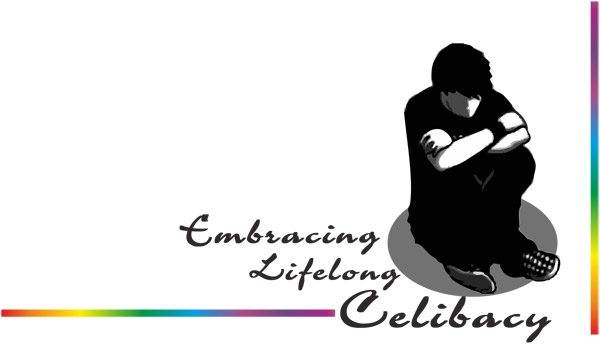
Embracing Lifelong Celibacy
By 1907, Kodak dominated the photography industry in America, Canada, Great Britain, France, Australia, Belgium, Germany, Russia and Austria. But on the personal front, George met with a colossal tragedy. On 16th June, 1907, his mother Maria died at the ripe old age of 86. Since the past four years, her physical condition had deteriorated and she kept being confined to her room for months at a stretch. George felt depressed and couldn’t bear the sight of his permanently debilitated mother. The usually reserved George was crushed on his mother’s death. He said later, “When my mother died I cried all day, I could not have stopped to save my life.”
Indeed, his mother’s death left a deep void in George’s life. He had always enjoyed in the constant companionship of his affectionate mother, who was the centre of his world. She had provided him a sanctuary and steadiness. This helped him take adventurous risks in his aggressive business world. While George’s work at Kodak Park always pressurized him, at home Maria’s presence gave him a sense of serenity. Moreover, Maria’s motherly love for George was a permanent security for him, due to which he probably ignored marriage. After her death in 1907, it was too late for him to marry at 53 years. The idea of marriage did not fascinate him either. He was detached beyond a point, which made it very difficult for him to express his intimate emotions. Additionally, he was extremely obsessed with his work, decorum and order that also may have made him incompatible for a married life. Without a doubt, Kodak kept him miles away from marriage.
Nevertheless, George cherished his warm and friendly relations with many married women in his middle age, notably with Mrs. Mary Mulligan, Mrs. Lillian Norton and Mrs. Josephine Dickman (his London Managing director’s wife). A platonic romance with Mrs. Dickman was speculated after her husband Mr. George Dickman died in 1898. She was a trained singer, who also shared many common interests with George. Moreover, Maria too got along well with Mrs. Dickman, since her first and only transatlantic trip to Europe in 1889, where they had first met. So George carried on a relaxed and contended friendship with Josephine Dickman.

Government’s Antitrust Lawsuit against Eastman’s Company
As the second decade of the 20th century progressed, innovative photographic products rolling out of the Eastman Kodak Company continued to bring in good business. So by 1918, 64 year old George’s salary rose to $100000 a year. However, by now, George had lost all his enthusiasm to mount up wealth. He started plotting and scheming to disperse a sizeable amount of his fortune accumulated in his lifetime on philanthropic pursuits, especially after the end of the World War.
Meanwhile, George’s inclination to dominate the entire film and motion-film industry, found him entangled in legal disputes in America. The American government, then headed by President Woodrow Wilson had hardened its stance against monopolistic companies. Antitrust sentiments had built up against Kodak too, as Kodak was accused of illegally monopolizing the domestic photographic trade. Additionally, the US government had already filed the petition United States vs. Eastman Kodak Company in June 1913, where the government proposed to dissolve or restructure the company into smaller companies that would break up Kodak’s monopoly, promote more free trade practices, and principally benefit the domestic competitors. George was against this. So he patiently and tactfully started reorganizing his company activities in line with the government’s intentions, as he kept thinking about the consequence his baby, ‘Eastman Kodak Company’ would have to face in case of his sudden death. By 1919, George had created a tentative organizational structure of different divisions, and also created 5 Vice Presidents in charge of his company. So, at age 65, George’s one-man centered company control ended.
The lawsuit dragged on beyond the World War. Winding its way through the changing climate of judicial interpretations, the suit was finally settled in 1921, when George agreed to sell 3 Kodak plants and equipments. The antitrust decision did not impact the company much, except that the company was no longer under the extreme centralized control of George Eastman. Gradually he withdrew from his posts and began offloading his staff functions, till he finally retired in 1925 at the age of 71. After this, he assumed more of an honorary position and was wisely donating huge sums of his wealth to charities he believed in.

George’s Lifetime Philanthropic Contributions
George Eastman was an extremely successful businessman and industrialist. He was one of America’s richest magnates of his era. Yet, a lesser known fact about him was that he was a philanthropist. Though recognized as a shrewd businessman, he was astoundingly generous. As much as he was interested in making money, he also enjoyed putting it to good use during his lifetime, and wanted to witness the results too. He never just donated money, but also took decisions on how best to utilize it. In a speech to Kodak employees he once said, “A rich man should be given credit for the judgment he uses in distributing his wealth. Rather than the amount he gives away.”
George would say, “The progress of the world depends almost entirely upon education”. So he hired the best talents armed with technical knowledge, such as engineers, technicians, researchers, chemists and managers. He also donated phenomenal amounts to technical educational institutions. However, his name was always withheld as he worked hard to maintain his privacy, rarely gave any interviews and avoided media publicity. Even his personal and public life was largely unknown. He was tagged as ‘America's most modest and least-known millionaire’ by the Boston Globe. Even when George donated $20 million in cash and Kodak stock to Massachusetts Institute of Technology (M.I.T.), under the pseudonym ‘Mr. Smith’, his identity was not revealed for eight years. But the generosity of ‘Mr. Smith’ had been immortalized in a song by M.I.T. students. His beneficiaries are largely M.I.T, the University of Rochester, for its School of Medicine and Dentistry, Eastman Dental Centre (known as Rochester Dental Dispensary on inception), dental clinics in five capitals of Europe (London, Paris, Rome, Stockholm, Brussels), Eastman Theatre and School of Music, Hampton and Tuskegee Institutes for African Americans and his employees. However, there were many other lesser known ones too.
George’s aim was to produce ‘one of the world’s healthiest communities’ in Rochester and safe guard health of the general public. Hence his much-loved philanthropy projects were establishing dental clinics for children. Remembering his early days when he and his mother had often experienced painful teeth problems, George strongly supported dental health care by donating millions of dollars.
George also believed that ‘leisure time’ was precious, so he felt it an obligation to supply his community people continuously with new varieties of recreation and entertainment. He then conceived and contributed immensely towards his ‘Great Music Project’, consisting of the Eastman School of Music and George Theater, which also busied him in another occupation in his late second and third decade of the 20th century. The Rochester Philharmonic Orchestra was also founded by George in 1922, which still plays at the Eastman Theatre. Supported today by the Rochester community, the theatre and the orchestra have worldwide recognition, and are of massive pride to the locals. Certainly, George Eastman is most revered by Americans and the citizens of Rochester, for in his lifetime, he was America’s largest donor who had bequeathed over $100 million.
Gift to Kodak Employees
George Eastman was extremely reserved and shy as a person. He lacked the socializing skills to mingle with people, even his office employees. He was known to be a difficult man with odd mannerism who remained aloof. Yet he was a large-hearted and caring industrialist. George was the first businessman in America, and maybe the world who cared enormously for the welfare of his employees. He once said that “the success of a company depended on worker happiness and securing their loyalty and less on inventions and patents”. He also strongly believed that, “an organization cannot be sound unless the spirit is sound”. So he discouraged the formation of labour unions at his factory, treated his employees with respect, wanted loyalty and the same attitude from them.
George first began giving gifts to Kodak employees out of his personal profits in 1889. A bonus of $178,000 was distributed among 3000 employees of Kodak. The pension fund he invented for his employees was called ‘Wage Dividend’, with the idea that it would see their families adequately through retirement. George felt that this was his responsibility to his employees. Later in 1919, George gifted one third of Kodak stock among his employees (worth about $10 million), and shared his profits to sponsor employee dividends. The other company profit sharing and employee benefit programs introduced by him were health services, life insurance, disability benefit plans and retirement funds. Clearly he valued his employees, who had made Kodak a successful venture.
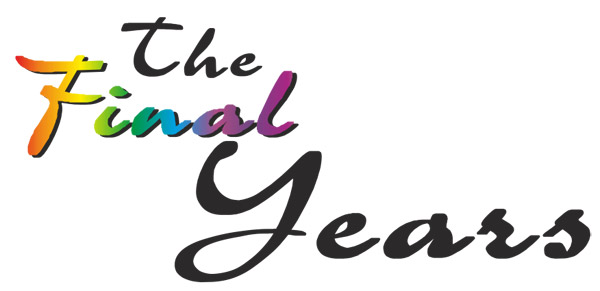
The Final Years
In his later years, especially after retiring in 1925, George Eastman followed his ‘work hard and play hard’ maxim to the fullest. By then, his company operations had been institutionalized and were running smoothly. He then spent the last two decades of his life in leisurely activities, a man of his stature and wealth could afford. He went on 6 to 7 month long vacations such as camping in Alaska and on hunting trips to Africa. He even brought back several wildlife specimens for the American Museum of Natural History.
George’s ‘Great Music Project’, namely the ‘Eastman School of Music’ and ‘Eastman Theatre’ also gave him much fun and pleasure in his old age. However it also caused him tremendous disappointments. Eastman Theatre was designed to screen silent movies that were accompanied by a symphony movie orchestra. Initially, the theater was well-known as acoustically the best in the USA, but after the arrival of the talkies, a motion picture technology that George reluctantly accepted later, and the looming depression, the theatre orchestra received a financial setback around 1928. In George’s mind, this was a grand failure and he lost his interest, as at the same time his enthusiasm and vigour too declined.
With the death of his close friends and relatives, George felt a profound sense of loss and his own health then began rapidly deteriorating, especially after his second African trip. Already facing disturbed sleep cycle and insomnia, by 1929, arthritis of his hip and spine, only worsened. Always independent and in control of his life, George now knew what lay ahead in store for him. He just couldn’t bear the thought of heading towards an invalid life in a wheelchair like his mother and sister Katie, chained to a house keeper and a nurse. What depressed and bothered George in reality was the fact that people had no control over deteriorating human faculties and bodily functions due to illness or old age, something that even he was not prepared for.
Doctors today know George’s disorder as ‘Spinal Stenosis’, which gave him intense pain and made it difficult for him to even stand and walk steadily in his final years. Confined to his room for months at a stretch, he was miserable as he felt that his friends had abandoned him. In reality, his overprotective housekeeper and nurse had isolated him from his friends, giving them only a 15 minute visit time. Soon enough he decided to take the matter in his own hands. He resigned from his many social obligations by 1930, and would spend his time mostly at home, sitting completely dressed in a business suit and shoes by the sofa, near his fireplace, listening to the radio and watching weekly movies. He wrote many letters to his friends and acquaintances giving them the idea that he was almost through, and that his work was done. His office visits declined to once a week, but he took occasional rides around the city. He also read an average of two murder mysteries a day, which his physician Dr. Stewart later suspected after his death that he was actually hunting for the perfect drug to kill himself. He recounted George discussing the effects of various drugs like strychnine, arsenic and cyanide. On one occasion, George had even asked Dr. Stewart to outline his heart for him, information that proved valuable for his final act that shook the world.

George Eastman Fades Out With A Bang
George Eastman had once said when he retired, “I just want to fade away, not go out with a bang.” But, despite his victorious innings in life as an industrialist, a feisty businessman and philanthropist, George Eastman had a dramatic exit from this world at the age of 77 years.
As George’s final days drew nearer, he patiently cleared up his contracts and liabilities, revised his long will, reading every clause very carefully. Days before his death, he refused to endow the Eastman theatre orchestra and said that the community should support it and take care of it if they wanted it. On 9th March, 1932, Wednesday, George altered his will that was earlier drawn on 1925. His Kodak attorney added new codicils to his new will, where George bequeathed to the University of Rochester, the land and the buildings he owned. His will primarily mentioned that subsequent to his death, his mansion ‘Eastman House’ be used as the residence of University of Rochester’s President for 10 years. Then on 10th March, George went for a ride around Rochester, to see the landmarks in his life and say a final goodbye.
Reverend George E. Norton, (Mrs. Lillian Norton’s husband) last met George on 11th March, Friday in 1932, during a regular visit. In his account, he recollected that George lay on his couch upstairs. At six o'clock when Norton arose to take leave, George took his hand and would not leave him. Just as George would plead to others, he said again, “Oh, don't go yet. You don't know what it means to be so alone. There is no one in this house who cares about me; just hired help.” Norton did stay longer, but nothing was said. After all these years, George had finally revealed a lonely side of his personality. He was missing a family to take care of him. This was a deeply painful phase for George, as he was an extremely unhappy and a lonely man in his old age.
Further changes to George’s will were added on 12th March. Then on 14th March, Monday, three witnesses arrived at 11:15 a.m. from the Kodak office to his house. George joked with them cheerfully, and signed his will in their presence. Alice Whitney Hutchison, his long time personal secretary of 40 years usually followed the practice of typing the will, and gave a $10 gold piece to each of his attorney witnesses. On this occasion, after the witnesses left, George instructed Alice to give them a $20 gold piece each. After Alice and his nurse left, with the door closed behind him, George smoked a Lucky strike cigarette, and wrote a note that said,
“To my friends
My work is done –
Why wait?
GE”
After removing his glasses and capping his pen, he lay down on his bed, covered his chest with a wet towel, and shot himself through his heart with an automatic pistol at 12:50 p.m.
On 14th March, 1932, George Eastman left the world with a bang. After George had taken care of all his assets, and left his will altered, he took his own life, leaving behind extraordinary gifts for mankind. Just as his life, George’s final act too was carefully designed and accomplished. In keeping with George Eastman’s wishes, his burial in Waterville was avoided and his ashes now remain in Kodak Park. Today, his house is the George Eastman House International Museum of Photography and Film - the world’s oldest Photographic museum.

Significant Contributions by Eastman Kodak Company
There were many other significant inventions by Eastman Kodak Company that were considered scientifically important, such as medical imaging, satellite imaging, dental photography, aerial photography, a special camera for use in orthodontia, autographic camera, the finest x-ray products etc. George Eastman was also seen engrossed with kite photography among crowds, and experimenting with different shutter releasing devices. During the First World War, George Eastman’s company manufactured trench periscopes and aerial machine gun cameras. In this period, Eastman’s chemical laboratory made America self-sufficient and free of raw materials from Germany, their enemy. In due course of time, it made America the world leader in chemical industry.

Eastman Kodak Company in 2013
George Eastman’s revolutionary ideas and gritty determination laid the foundation of his ‘Eastman Kodak Company’, the only place he ever wanted to see his name on. He was certainly a creative genius and a trend setter, who vigorously built a worldwide industry with new and emerging photography technology of his era. A community minded person and a silent philanthropist; he took pride in the fact that he could help someone else earn a living. Eastman was also the best employer of his time, and his exceptionally wonderful quality was his loyalty to his own employees. He was known among the industrial workers of his time to provide higher wages and benefits than most employers. So Kodak’s employee strength grew from 3000 in 1900 to more than 15000 employees worldwide by 1920. Rochester alone had over 7000 employees. Employees were a thoroughly satisfied lot as Eastman’s policies ensured that they were well taken care off. They never left his company, which showed the lowest attrition rate till many following decades. One grew to the top from the bottom and no one entered in the middle. High ranking positions were filled by meritorious promotions. Till 1993, the CEO’s climbed up through the ranks. Thus George Eastman had established a healthy framework for his company, where Kodak was one of the most recognized brands in the world till the end of the 20th century.
Kodak is one of the pioneers in digital photography too. It created the first digital camera way back in 1975 and was the first to market an early digital camera model – a DCS-100. However, the company was tardy in capitalizing on its invention in digital photography. The company feared that its film business would shut down if it jumped into the fray of digital revolution, and missed the bus. Soon, Olympus, Canon, Nikon and many others left Kodak miles behind, as Kodak began its marketing mission in digital cameras only in 2001.
Today, Eastman Kodak Company is financially ailing. Earlier in January 2012, the company filed for Chapter 11 bankruptcy protection in the United States, listing its assets at $5.1 billion and $6.75 billion in debt. A lesson, the present and future leaders of the company must learn – to adapt to changing situations immediately, just as their founder George Eastman had done and set an example to everyone with his strict business practices, more than a century ago.
Since the turn of the 21st century, the craft of photography is largely turning digital. Yet we must remember where it all began, and credit George Eastman, the ‘father of popular photography’ for his pioneering efforts in simplifying photography. As a humanitarian, philanthropist, manufacturer, innovator, industrialist and an astute entrepreneur, George Eastman made invaluable contributions to science, arts and humanities during his lifetime and even left a large legacy for the human race to inherit. He stood for the cause of promoting dental health care among children, and believed in the power of education in building a better society. He will be remembered throughout history for his remarkable contributions to mankind, and for revolutionizing the field of photography, film, and motion picture industries.
Biography of George Eastman | 0 Comments >>
0 --Comments
Leave Comment.
Your email address will not be published. Required fields are marked.
